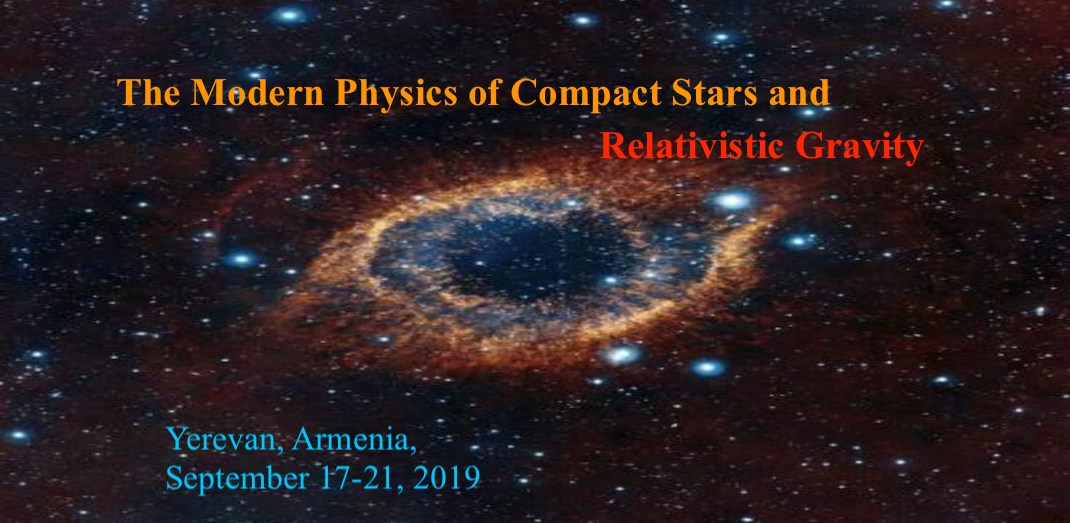Speaker
Description
Since the mechanisms of compact objects’ formation in the framework of alternative new theory of cosmology (called as “Non-Inflationary Cosmology” (NIC), to distinguish from the Inflation theory of Modern Cosmology (MoC)) is essentially correlated with the galaxies’ generation scenario, this thesis is designed in the form of compressed review on the new cosmological and astrophysical scenarios concerning the formation of galaxies and its compounds – SMBHs, stars and SNs. The investigations of compact objects (especially, stars ranging from Sun’s mass to massive one, black holes from intermediate- to super-massive one, and supernovas, probably not standard candles, in contrary to MoC) have been initiated from the conceptual new view on the evolution problem of the Universe, as well as on cosmological original principles and hypotheses disclosed within NIC. During the evolution of the Universe, the original cosmological phenomena and processes have been disclosed in the threshold of Matter Era (ME) stage and further period [1,2], being very abundant by new and unique events. First of all, these are the Cosmological Small Bang (CSB) (local explosion within the galactic scale) and its direct consequence – Strong Shock Waves (SSW), and the new effect – the “induced gravitational collapse”. Together these phenomena have initiated the IMBH and SMBH generation in the core of galaxy, formation of stars and SNs from the fragmentations of initial self-collapsing Bose-configuration after local explosion. The main hypothesis of NIC is Planck’s constant time-variation phenomenon [3], which substituted the “explanation” of cosmological redshift, accepted in MoC via Doppler Effect. This hypothesis step-by-step is relieving the cosmology from the “necessity” of the hypothetical Dark-Energy, suggesting instead it the phenomenon of CSB as a possible source of energetic activity of galaxies [4,7] (caused by the sharp phase transition process from the initial Bose-statistics into Fermi one within the surrounding zone of CSB). Thus, being forced to revise once more the basics of MoC, one has deepening into its physical foundations, as well as cosmological and quantum-mechanical essence of Planck scales, disclosing disagreements between the basics of MoC and requests of fundamental physics. Leaving aside our detailed arguments on the physical-epistemological confusion, hidden in the physical essence of Planck scales, here I just mention the most prominent argue: the appearance of any fundamental particle in Nature, especially the Planck’s particle, earlier than the Higgs boson, is contradicting the main concept of Standard Model. So, the next requirement of NIC has been the problem of new fundamental scales, naturally using the mass of Higgs boson as an etalon for ME. First and foremost, the experimental proof of Higgs Boson’s existence has confirmed our earlier prediction about Higgs bosons’ possible participation in large-scale Bose-condensate state, as a more broadened cosmological model of galaxy [1,2,6]. Moreover, as the Higgs boson was labeled “God’s Particle”, then it had to have an essential cosmological mission also in the “construction scenario of fundamental cosmological scales in ME” [5,6]. Thus the theory of NIC has succeed in design of original scales and corresponding scenarios for generation of various types of galaxies and massive BHs in their cores, as well as low- and high-mass stars and variable SNs within the disk, bulge and halo of the galaxy. In addition, let note that the theory of NIC is able to explain also the morphological types of galaxies (starting from dwarf galaxies with IMBH in their core till the giant ones with SMBH), especially, the generation of rotation curve of disk-galaxies without resorting to the help of hypothetical Dark-Matter [7]. In fact, within the NIC the step-by-step accumulation of the rotating momentum of disk has been realized due to symmetry breakdown of CSB with further action of SSW. As the formation of rotating disc likely has been formed as direct result of galactic interior processes, the requirement of MoC– the necessity of Keplerian law for the explanation of rotation curve of disk – already is groundless as a factor from “outside”, so the CSB and SSW phenomena are able to adopt the main cosmological mission of Dark-Matter. The theory of NIC is able to resolve also the following enigma: “is the merging-galaxy realistic or the single galaxy with own double SMBHs in core”? The further investigations on the problem of high-energy phenomena around the SMBH revealed new alternative mechanism for the Gamma-astronomy in scope of NIC, disclosing the origin of new astrophysical phenomenon as a possible source for HE-, even VHE-gamma quanta [8,9]. Thus, one may manifest the so called “coherent drop of bi-component Bose-condensate within the galactic IMBH or SMBH” as a new unique phenomenon in role of real candidate for the energetic source and engine in the new model of galactic jet.
References
[1] A. K. Avetissian, arXiv: 0711.2969 (2007).
[2] A. K. Avetissian, Astrophysics, 51, 130 (2008).
[3] A. K. Avetissian, Gravitation and Cosmology, 15,10 (2009).
[4] A. K. Avetissian, In book: Evolution of Cosmic Objects Through their Physical Activity, Byurakan (2010).
[5] A. K. Avetissian, Astronomical Society of the Pacific Conference Series, USA, 511, 236 (2017).
[6] A. K. Avetissian, Gravitation and Cosmology, 24, 375 (2018).
[7] A. K. Avetissian, Reports of National Academy of Sciences RA, 119, 142 (2019).
[8] A. K. Avetissian, In book: Proceedings of MePHi 4th International Conference, Moscow (2019).
[9] A. K. Avetissian, Proceedings of Int. Conf. on VHE Phenomena around SMBH, Yerevan (2019).
